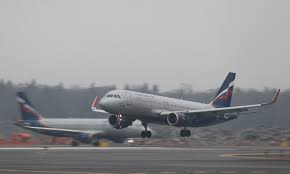Recent Developments in Aeroflot Airlines Operations

Introduction
Aeroflot, the flag carrier and largest airline of Russia, plays a crucial role in global aviation, connecting numerous destinations across five continents. With its rich history dating back to 1923, the airline has undergone significant transformations, especially in light of recent geopolitical events. This article explores the latest developments concerning Aeroflot, highlighting its operational adjustments in response to various challenges.
Recent Operational Challenges
In 2023, Aeroflot faced unprecedented challenges due to international sanctions imposed following Russia’s military actions in Ukraine. These sanctions have impacted the airline’s ability to access key components and spare parts required for aircraft maintenance and operations. Consequently, Aeroflot has been forced to re-evaluate its routes and fleet management strategies.
Fleet Adjustments and Route Changes
Aeroflot has recently announced modifications to its flight schedules, significantly scaling back services to Europe and North America as it struggles to maintain operational capacity. Instead, the airline is focusing on bolstering its domestic routes and expanding connections within Asia. Over 30 destinations have been added to its domestic flight network, catering to the growing demand for regional travel. Furthermore, Aeroflot is exploring partnerships with non-European carriers to fill routes that have been impacted by the loss of Western alliances.
Technological Innovations
Amid these changes, Aeroflot is also investing in technology to enhance passenger experience and operational efficiency. The airline has begun implementing advanced booking systems and contactless check-in processes to streamline travel. These innovations are particularly valuable in the current environment, where safety and convenience are paramount for travellers.
Future Outlook and Significance
Looking ahead, Aeroflot’s ability to navigate these turbulent times will be pivotal for its long-term sustainability. While the airline faces significant headwinds, focusing on domestic markets and technological advancements may offer a pathway to recovery. Industry analysts suggest that a diversified strategy could help Aeroflot regain its footing in the competitive aviation market. As the global landscape continues to evolve, the operational direction taken by Aeroflot will not only impact its future but also the aviation sector in Russia and beyond.
Conclusion
Aeroflot’s recent actions reflect the broader challenges faced by airlines amid global disruptions. While the road ahead may be fraught with difficulties, the airline’s adaptability and resilience will be crucial for overcoming obstacles and seizing new opportunities. For travellers and stakeholders in the aviation industry, keeping track of Aeroflot’s progress offers valuable insights into the future of air travel in an increasingly complex global environment.








